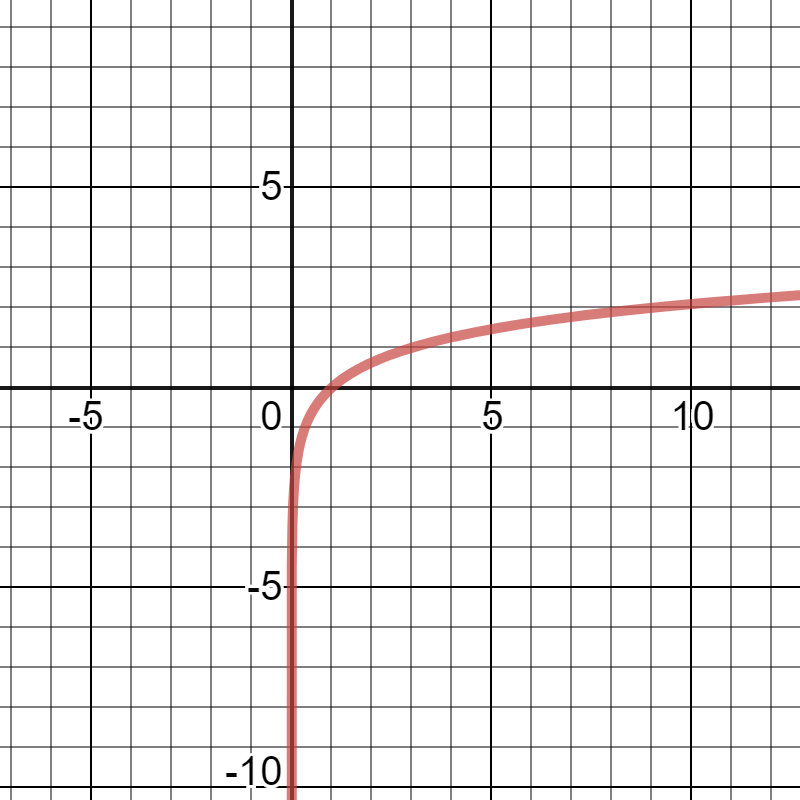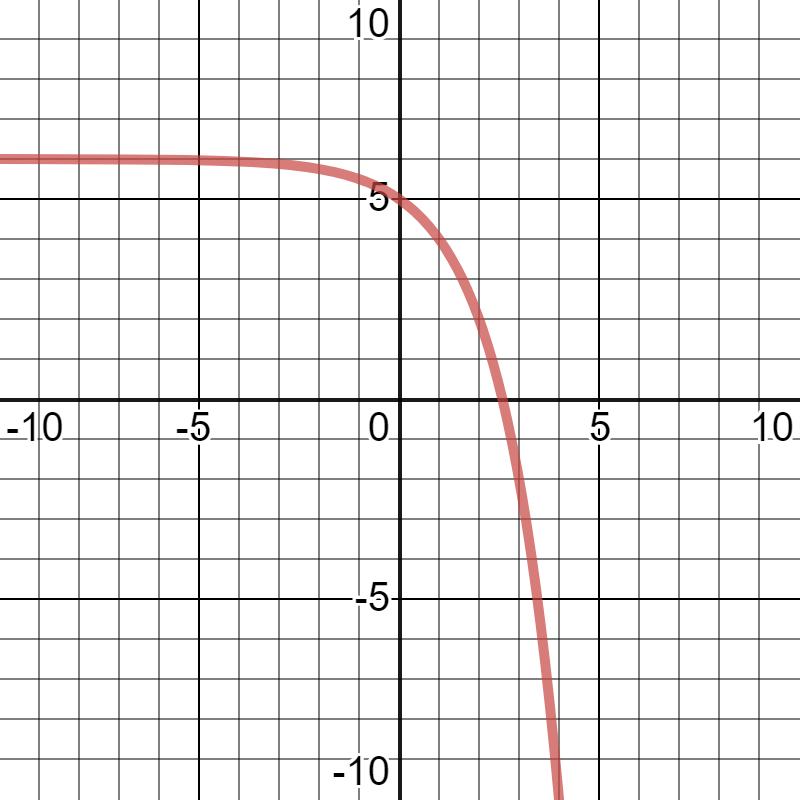Solve for x:
10^x-3=997
x=3
What does "P" represent in compound interest?
"Principal" or initial amount invested
Is the function exponential growth or decay?
f(x)=4^(-x)+3
Decay
What is the logarithmic form of:
3^5=243
log_(3)243=5
A={1,2,3,4,5,6}
B={2,4,6,8}
C={3,4,5,6}
Given the sets, find
AnnBnnC
AnnBnnC={4,6}
Solve for the exact answer for x:
4^(2x-3)=71
x=(log_(4)71+3)/2
Given the equation, what is the percent of annual interest in the problem?
400(1+.035/2)^10
3.5 %
Is this graph exponential or logarithmic?

LOGARITHMIC
Solve:
log_(2)4096=?
12
What is the domain of
f(x)=2/(x^2-4)
(-oo,-2)uu(-2,2)uu(2,oo)
Solve for x:
log_(3)(x-4)=2
x=13
If a particular Egyptian artifact originally contained 21 grams of carbon-14, and if carbon-14 decays at a rate modeled by
A_(f)=A_(i)e^(-0.000121t)
how much carbon-14 should be present after 25000 years? Round to four decimal places.
1.0197 g
What is the y-intercept of this exponential graph?
f(x)=-3(2)^x-5
(0,-8)
Expand
log_2(6xy^2)
log_(2)6+log_(2)x+2log_(2)y
What are the x intercepts of
y=2x^2+17x-9
x=1/2, -9
Solve for x:
logx-log9=4
x=90,000
By investing $650 that pays 1% interest compounded continuously, how much money would you have after 11 years?
$725.58
What type of transformations are involved in the graph of
-log_(2)(x-4)+4
Reflect over x-axis, shift 4 right, shift up 4.
Combine the logs into a single log:
1/2(log24+log2-log12)
log2
Where does this rational equation have a vertical asymptote?
f(x)=(x-3)/(x^2-x-6)
x=-2
Solve for x:
log_(2)x+log_(2)(x-2)=3
x=4
Mariela puts $2200 in a savings account that pays 2.2% annual interest compounded monthly. How much money will be in her account after 8 years?
$2622.94
What is the domain and range of the graph of
f(x)=-(1/2)^x-5
Domain:
(-oo,oo)
Range:
(-oo,-5)
Expand:
log_(8)(9/(x^3y^5))^2
2(log_(8)9-3log_(8)x-5log_(8)y)
or
2log_(8)9-6log_(8)x-10log_(8)y
Find the domain of
f(x)=sqrt(x+3)+1/(x-5)
[-3,5)uu(5,oo)
Solve for the exact answer for x:
lnx-ln(x-5)=-3
x=-5/(e^3-1)
Mario puts $500 in a savings account that pays 2.5% annual interest compounded monthly. How many years would he need to leave his money in the account to have at least $1500 in savings?
44 years
Sketch the graph of this exponential equation. Must include asymptote and y-intercept.
-(1/2)^-x+6

Combine the logs into a single log. Answer must be simplified completely.
1/3(ln125-3lnx+9lny)
ln((5y^3)/x)
Write an equation that transforms the equation below by horizontally shrinking by 1/5, reflecting across the x-axis, and shifting 6 units left.
f(x)=2^x
f(x)=-2^(5(x+6))
f(x)=-2^(5x+30)